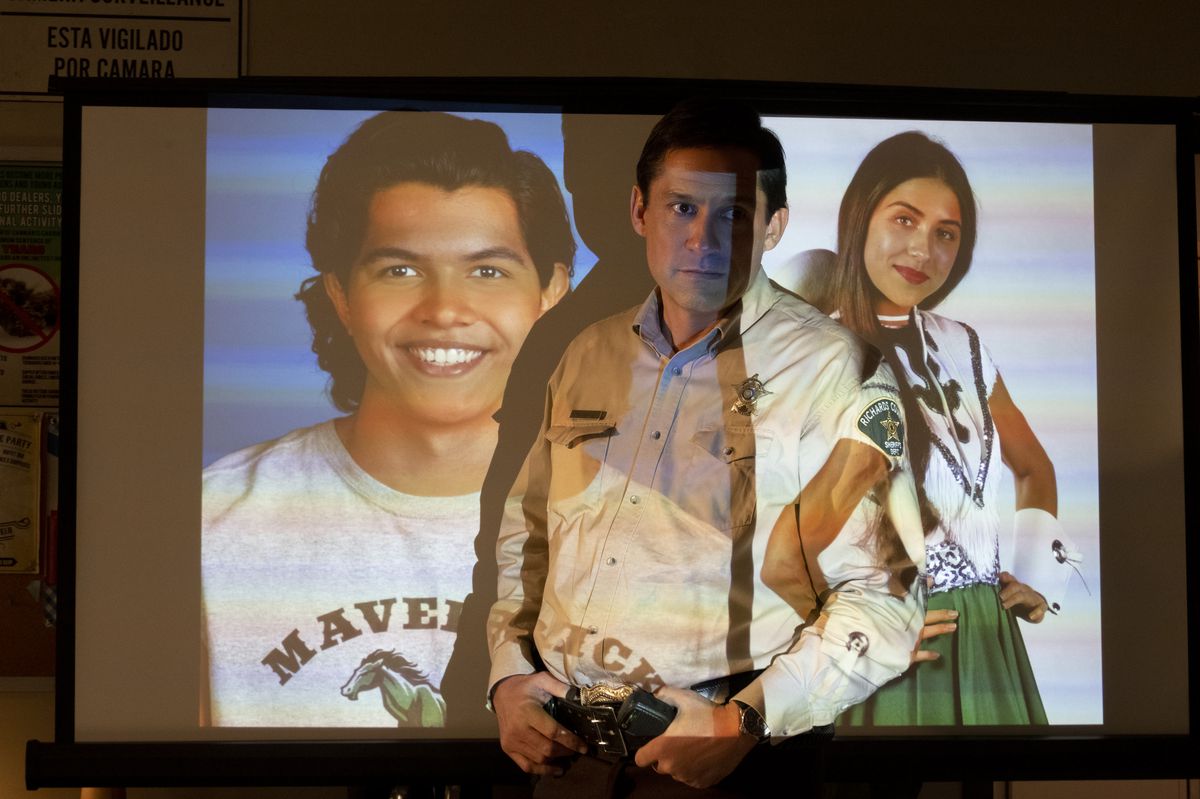Turning victims’ fear into a game is nothing new for film and TV, though it’s seen more often in horror movies like the Saw franchise and Escape Room than in mainstream young-adult fiction. But Amazon’s new YA series Panic finds a new twist on the idea. In Panic, graduating high-schoolers in fictional small-town Carp, Texas, play in a summer-long tournament called Panic that involves facing their greatest fears for a chance to win $50,000. Adapted from the YA book of the same name by show creator Lauren Oliver, Panic follows the current year’s players as they make their way through the game. At the same time, Carp’s sheriff’s department is investigating the previous year’s game, in which two players died. Panic is an entertaining show, but it focuses too much on the investigation and figuring out who runs the Panic games, to the detriment of the teenage main characters and the game itself.
Carp feels like an inescapable trap to its teenagers, who wish for better things, like stardom or college and a future, but are mostly likely to end up in dead-end jobs and poverty. The Panic tournament represents both a possible escape route and a distraction. The contestants are prompted to perform death-defying and illegal acts, from cliff-diving to breaking and entering. They’re asked to take lethal risks, or to spend time in frightening situations in confined spaces or haunted houses. The year that the show takes place is significant both because of the $50,000 prize — the largest pot in the history of the game — and the deaths the previous year. One of the victims was the sheriff’s son, and the police are doing their best to find out who runs Panic, supposedly to keep the town’s teens safe, but mostly to get justice for the dead.
Each Panic player has their own drama and secrets. Timid Heather Nill (Olivia Welch) doesn’t initially plan to play, but join the game in a nihilistic rush after her mother steals her college money to pay for car repairs. Natalie Williams (Jessica Sula), Heather’s best friend, planned to play from the beginning, and feels betrayed when Heather starts competing. Ray Hall (Ray Nicholson), the fearless class bad boy (and “possibly a psychopath”), is the frontrunner to win. Dodge Mason (Mike Faist), the “new kid” who moved to town a year ago, quickly becomes another frontrunner, and no one knows his true motivations for playing. Along with those four and their families, the show brings in other current Panic players, the town police force, previous Panic players, all their family and employers, and even a tiger. Eventually, so many names get thrown around that it’s hard to keep up with who’s who.

Photo: Matt Lankes/Amazon Studios
The show’s main draw is the Panic games, which play like a sanitized version of the teen dramas in recent Gen-Z stories like Euphoria and Genera+ion. Panic isn’t graphic about its sex or drug, though there’s a little gore. The show’s most heightened moments come from Panic sessions. As the challenges peel off the teen characters’ defenses to show their true motivations, it’s fascinating to see what scares each player, and whether they hesitate on a challenge, help fellow players out of a trap, or cheat. In a show with many twists and turns, not all of them necessary, knowing the next round of the game is on the horizon keeps the show engaging.
Show creator Lauren Oliver, who wrote every episode and executive-produced the series, makes many changes to her own book. Carp has moved from upstate New York to Texas, with some characters re-imagined as rangers who compete in demolition derbies and rodeos. The move to Texas is a smart change, allowing for bigger outdoor challenges and some great natural lighting, although the claustrophobia from the Carp of the novel gets lost among Carp’s wide lawns and the characters’ speedboat days on the local lake.
Oliver also expands on some of the main characters’ motivations, most drastically with Ray Hall, who’s a one-note, rote villain in the book. In the show, he becomes a misunderstood rebel who lives up to Carp’s expectations of him, while also resenting the judgmental image they have. Oliver has said in interviews that the show’s Ray was meant to be a generic “piece of shit” until the casting of Nicholson (Promising Young Woman) made her rework his whole story arc. It’s easy to understand why, as Nicholson has the most charisma of the cast, and looks the most natural in his role. He also takes part in a traditional YA love triangle with Heather and her best friend Bishop (Camron Jones), which is easier to sit through thanks to the excellent chemistry between Nicholson and Welch. (The second couple of the show, Natalie and Dodge, never feels particularly compelling, even though Sula and Faist give commendable performances.)
Alongside the game, the show’s second plot follows Sheriff James Cortez (Enrique Murciano) and his deputies as they investigate the game. Oliver created the police-procedural plot and most of the related characters for the show, since the book only included teenager POVs. While initially, the clumsy investigation seems like an answer to the inevitable question, “How have the teenagers gotten away with playing Panic every year?” it becomes more convoluted as the series continues, threading in multiple past players and townspeople who have no involvement with the current game. Also, apart from one bust early on, the cops seem less concerned with stopping the games than they are with learning the identities of the judges and organizers, to pin the deaths on them. The investigation is more of a second plot than a subplot, to the point that it distracts from the main characters and the current year’s game.

Photo: Matt Lankes/Amazon Studios
In addition to all the time spent on the sheriff department’s investigation, the show also includes more scenes from the perspective of the players’ parents. Some of those newly added characters help expand their kids’ motivation and backstory, such as Heather’s investigative skills learned from her cop father, and Bishop’s shaky relationship with his demanding judge father. Heather’s mother, Sherri (God Friended Me’s Rachel Bay Jones), is given a much more sympathetic leaning than she had in the book, making the relationship between her and Heather more interesting to watch as it falls apart.
Panic is an entertaining show for thrill-seekers who would watch a real-life version of the game, which makes it a shame that the show doesn’t focus enough on the game itself. They become secondary concerns as the show unfolds, more than afterthoughts, but less than the main event. While the latest game of Panic might not have been enough to fill a 10-episode show, it’s worth wondering what the show would have been if it had dug further into the game’s machinations, or on the teenagers’ subplots and characterization. After all, the point of Panic is to challenge the kids, not the adults.
All 10 episodes of Panic are now streaming on Amazon Prime Video.
Polygon – All
Source link
Related Post:
- Free Guy’s New Movie Posters Draw Inspiration From Animal Crossing, Doom, GTA, And More
- Steam’s latest surprise hit is a party game called Draw & Guess
- Windows 11 doesn’t officially support first-gen AMD Ryzen CPUs, but don’t panic just yet
- Playdate pre-orders open July 29, and Panic promises they won’t sell out
- Elon Musk’s building Tesla Bots now, but don’t panic: he says you can run away from them
- Planes Control’s latest update lets you draw safe paths for shuttles on the moon | Articles
- Layers of Fear 2 for Nintendo Switch Getting Two Discounts
- Neill Blomkamp On His New Gaming Focus And The Film Industry’s Fear Regarding The Future Of Games
- Overwatch Pro Players Fear for Their Jobs After PvP Updates
- Konami Teams Up With Layers Of Fear Dev For Alleged ‘Silent Hill-Related’ Project
